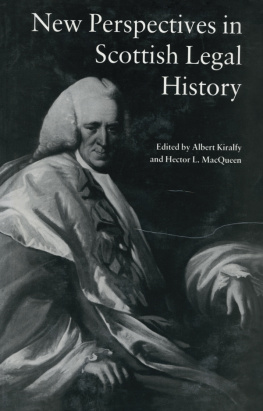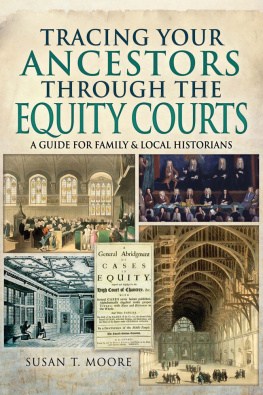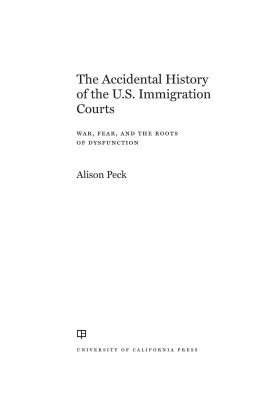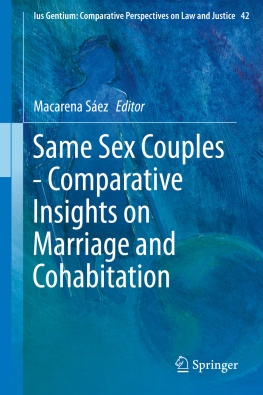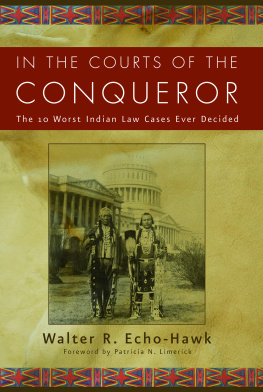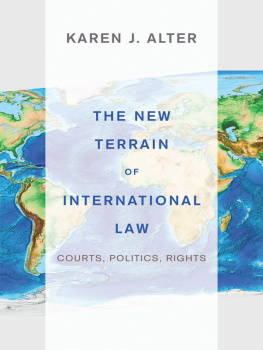Custom, Courts and Counsel
Selected Papers of the 6th British Legal History Conference Norwich 1983
Edited by
Albert Kiralfy, Michele Slatter and Roger Virgoe
First published in 1985 by
FRANK CASS AND COMPANY LIMITED
This edition published 2013 by Routledge
2 Park Square, Milton Park, Abingdon, Oxon OX14 4RN
711 Third Avenue, New York, NY 10017
Routledge is an imprint of the Taylor & Francis Group, an informa business
Copyright 1985 Frank Cass & Co. Ltd.
British Library Cataloguing in Publication Data
British Legal History Conference
(6th : 1983 : Norwich)
Custom, courts and counsel: selected papers
of the 6th British Legal History Conference,
Norwich 1983.(The Journal of legal history,
ISSN 0144-0365; vol. 5, no. 3)
1. LawGreat BritainHistory and criticism
I. Title II. Kiralfy, A.K.R. III. Slatter,
Michele IV. Virgoe, Roger V. Series
344.1009 KD532
ISBN 0-7146-3265-1
These Conference papers first appeared in a Special Issue on Custom, Courts and Counsel of The Journal of Legal History, Vol. 5, No. 3, published by Frank Cass & Co. Ltd.
All rights reserved. No part of this book may be reprinted or reproduced or utilised in any form or by any electronic, mechanical, or other means, now known or hereafter invented, including photocopying and recording, or in any information storage or retrieval system, without permission in writing from the publishers.
HUW PRYCE
The granting of sanctuary by churches was never solely a matter for ecclesiastics in medieval Europe. By providing partial immunity from legal processes it created problems of law enforcement that concerned secular rulers and lawyers too.1 The aim of this paper is to show how Welsh jurists of the thirteenth century conceived and treated of sanctuary and its secular legal consequences. Three aspects will be discussed in particular: (1) the inviolability of churches; (2) the exceptions to and restrictions on seeking asylum; and (3) the secular legitimation of churches sanctuary rights.2 Before opening the main discussion, however, it may be helpful to outline the historical and conceptual background of ecclesiastical sanctuary in medieval Wales.
We do not know when Welsh churches first claimed and exercised the power to protect persons seeking refuge from their enemies or their legal obligations. No collections of secular and ecclesiastical law such as illuminate sanctuary elsewhere in early medieval Europe survive from Wales, and our earliest evidence is contained in the Llandaf charters, some of whose references to violation of sanctuary appear to belong to original records dating from the eighth century and later.3 In the late eleventh and early twelfth centuries Welsh hagiographers claimed substantial sanctuary rights for their churches, as did the final editors of the Book of Llandaf.4 The territorial protection of saints and their churches was praised by twelfth-century poets5 and by Gerald of Wales. Gerald, however, complained that this protection was abused by men who, having fled from the animosity of their princes, then used the churches as based from which to launch attacks of their own.6 Other twelfth-century sources confirm Geralds view that, in a society of rapidly changing political alliances, sanctuary could promote violence as well as protect people from it.7
The origins and development of ecclesiastical sanctuary in Wales are further illuminated by the terms used for it in the lawbooks and other sources. Indeed, to speak of sanctuary is misleading if by that is meant the institution recognised by the canon law of Gratians Decretum (c. 1140) and later texts. The key Welsh word is nawdd, cognate with Old Irish sndud and argued to derive from a Celtic root, *snd, meaning protect.8 The earliest instances of nawdd in Welsh occur in the purely secular context of battle, where it clearly stands for physical protection or quarter, and this sense continued into the period of the lawbooks.9 The legal texts, principally in the opening tractate on the court, also attest to a secular concept of nawdd. There each member of the court possesses powers of nawdd protection whose duration or geographical extent varies according to the protectors status.10 The purpose of this nawdd is not stated and we therefore do not know whether, like the sndud of Early Irish law, it meant the power to accord to another person immunity from all legal processes,11 or simply protection of life and limb for whatever reason. Sparing a person from death certainly appears to be the principal secular meaning of nawdd in the non-legal sources.
The archaic concept of nawdd as a protection bestowed by individuals was attributed by poets to secular rulers as well as to God and His saints.12 By the end of the eleventh century, and probably much earlier, churches seem however to have transformed nawdd into a territorial concept. The protection of a saint was held to extend permanently over land and churches consecrated to him. Thus Braint Teilo, a document setting forth the privileges of the church of Llandaf, claimed jurisdiction for the church over breakers of its nawdd, both within and outside the llan or church-enclosure. Saints Lives resemble the Llandaf material in asserting the privilege of refugium, the normal Latin translation of nawdd, in generous territorial terms.13 Twelfth-century vernacular poetry presents a similar picture, and in addition to the word nawdd used a compound of it, noddfa, field of protection, which also occurs in prose texts of the following century, including the lawbooks. Noddfa is almost always used with regard to churches and underlines their success in establishing a territorial concept of nawdd.14
When the earliest extant Welsh lawbooks were being written down in the thirteenth century it is very likely that the secular institution of nawdd had been exclusively appropriated by the church, and adapted to an ecclesiastical concept of sanctuary. This concept was embodied in the term refugium, the standard Latin equivalent of nawdd in Welsh law. Refugium was an unusual term for sanctuary in medieval Europe and is attested predominantly in Irish and Welsh sources.15 These would appear to have derived it from Old Testament accounts of the Levitical civitates refugii, cities of refuge, to which those who had killed by accident or in ignorance might flee.16 Refugium was used to translate the nawdd pertaining to the church of Llandaf in the early twelfth century and, by the middle of the thirteenth, in the Latin texts of Welsh law, rendered secular and ecclesiastical nawdd alike.17 This may indicate that nawdd in its legal sense had by then become primarily an ecclesiastical attribute. The secular nawdd


